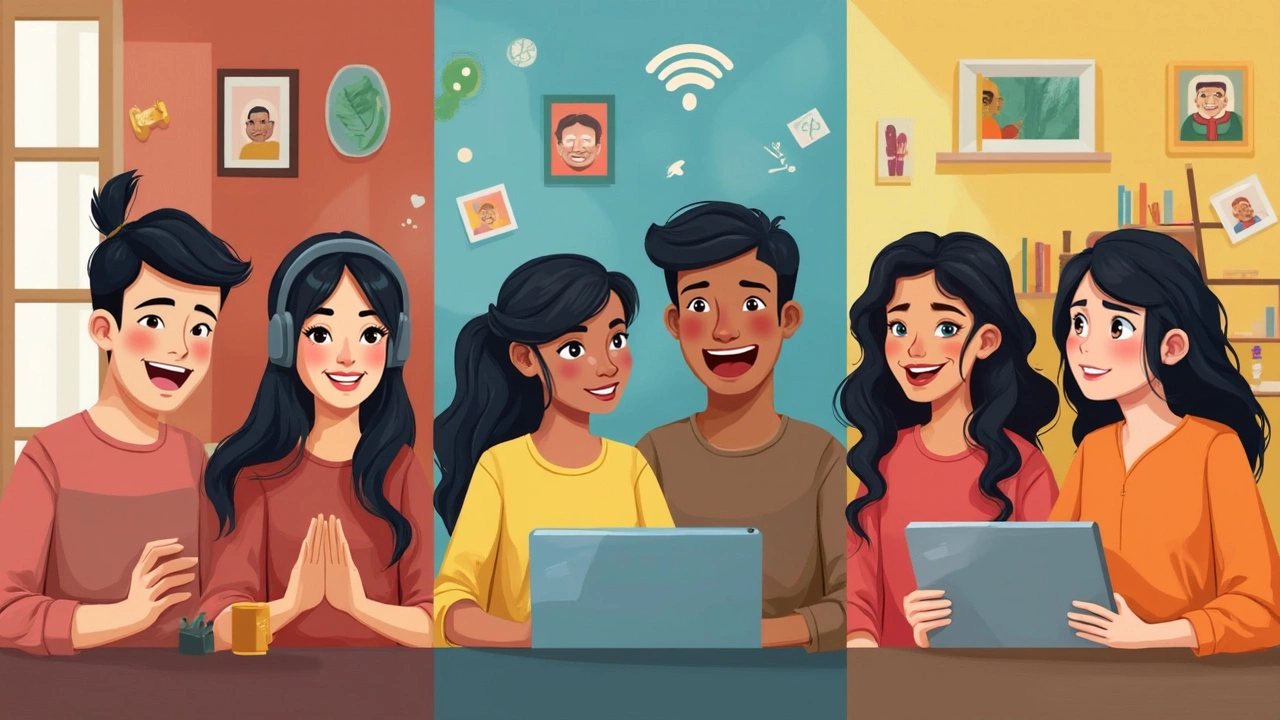You’d be surprised how many people dive into eLearning without checking their basic tech setup. The absolute game-changer? Stable internet. You don’t need the fastest fiber optic line, but if you’re stuck with a weak connection, you’ll lag, buffer, and miss parts of lessons—it’s beyond frustrating. Check your Wi-Fi strength in your study spot, and if needed, go old-school and plug in with an Ethernet cable.
Another thing you can’t ignore: your device. Phones are fine for quick reviews or videos, but a laptop or tablet with a decent screen is way better for actual coursework, typing, and research. A cheap pair of headphones helps a ton if you share your space with others, blocking out noise so you can focus. No need to break the bank—get what works reliably for you and won’t give out halfway through a live class.
- Reliable Tech and Connection
- Choosing the Right Platform
- Content that Keeps You Hooked
- Staying Motivated and On Track
Reliable Tech and Connection
Let’s get real—if your tech’s flaky, eLearning turns into a nightmare. The two biggies to nail down are your device and your internet connection. According to Pew Research, about 77% of U.S. adults say they have broadband at home, but a solid setup for online learning isn’t just about saying you have internet—it’s about having a consistent, stable signal where you work. Nobody wants to be the student constantly dropping out of Zoom or waiting forever for videos to buffer.
First thing: test your speed. Free tools like Speedtest.net give you the numbers in seconds. For digital education, anything above 10 Mbps usually works, but aim for 25 Mbps or higher if you can swing it, especially if others use your Wi-Fi. If your connection’s wobbly, try using a wired Ethernet cable. This simple upgrade solves most random disconnects and lag spikes, making your virtual classroom time a lot smoother.
- Plug your device directly into your router for better stability.
- Don’t study too far from your router—signal strength drops with distance and walls.
- Ask family members to pause streaming or big downloads during live classes.
Your device matters, too. If you’re still running on an old laptop with a dying battery, consider upgrading, even if it’s to a used or reconditioned one. Chromebooks are super popular in schools for a reason—they’re simple and reliable for most learning platforms. Always keep your device updated—software fixes bugs that might slow your connection or lock you out of apps.
| Minimum Recommended Specs | Why It Matters |
|---|---|
| 8GB RAM | Handles video calls and multitasking |
| Webcam & Microphone | Needed for participation and presentations |
| Latest Browser | Supports all features on modern eLearning sites |
Finally, back up your data. Cloud storage like Google Drive or OneDrive keeps your work safe if your computer suddenly quits or you switch devices. You won’t believe how many panic moments you can dodge just by saving everything in the cloud.
Choosing the Right Platform
Picking the right eLearning platform is what makes or breaks your online learning experience. A fancy website doesn’t always mean it meets your needs. You want something that’s easy to use, has the features you need, and plays nicely on your devices. If you’re using a clunky platform that crashes or hides assignments, motivation goes out the window fast.
Look for platforms that offer well-designed dashboards. You should see your progress, deadlines, and new lessons at a glance—no digging around. Also, check if their virtual classroom works smoothly for live sessions. Popular picks like Google Classroom, Moodle, and Canvas are favorites with schools for a reason: they’re packed with features like discussion boards, quizzes, and reliable gradebooks. If you care about grades and feedback, a clear grading system is a must.
And here’s a tip: always test on your device before committing. Some online learning platforms look great on a laptop but are clunky on phones or tablets. A lot of students use mobile for at least part of their study time, so having a solid app really matters. Plus, double-check if the platform supports your preferred content: videos, slides, or interactive quizzes. Nothing’s worse than finding out your device can’t open half the lessons.
- Check for easy navigation and fast loading times.
- Test live video or chat features before the first lesson.
- Read real user reviews—not just the company’s own promo.
- See if you can get technical support quickly, not days later.
- Look for platforms with regular updates and new features. That means the team cares.
Here’s a quick look at what users say about some top learning platforms:
| Platform | User Rating (out of 5) | Key Feature |
|---|---|---|
| Google Classroom | 4.5 | Seamless with Google tools |
| Canvas | 4.3 | User-friendly mobile app |
| Moodle | 4.0 | Highly customizable |
| Blackboard | 3.8 | Advanced grading systems |
So don’t just pick what’s popular—pick what works for you, your device, and your goals. Being picky now saves a ton of frustration later.

Content that Keeps You Hooked
Ever sat through a boring eLearning course that just dumps PDFs or bland slides on you? That’s a recipe for zoning out. The best online learning platforms mix things up with videos, quizzes, and interactive bits to keep you on your toes. For example, platforms like Coursera and Udemy report higher completion rates when courses include video explainers, practice questions, and mini-projects—anything that gets you to actually use what you’ve learned, not just read it.
Here’s the thing: your brain remembers stuff better if you’re hands-on. Instead of endless text, solid digital education content uses:
- Short videos (under 10 minutes)—these don’t just carry info; they make it stick
- Quizzes after short sections—instant feedback beats waiting till the final test
- Drag-and-drop exercises and clickable diagrams—good for visual and interactive learners
- Discussion boards—seeing how others think helps you reflect and fill gaps
Check out this quick rundown of what actually keeps learners engaged (based on 2024 data from leading online platforms):
| Type of Content | Reported Learner Engagement Boost |
|---|---|
| Interactive Videos | +38% |
| Regular Micro-Quizzes | +31% |
| Peer Discussions | +23% |
| Live Q&A Sessions | +27% |
Don’t be shy about skipping courses that are just long readings or slides. It’s 2025—modern online learning should be more than a digital textbook. Look for content that invites you to do, not just watch or read. That’s what really helps you hold onto new knowledge.
Staying Motivated and On Track
Keeping up with eLearning isn’t always a walk in the park. It’s easy to lose momentum when nobody’s physically watching over you. Procrastination sneaks in faster when classes are one click away from Instagram or YouTube. That’s why you need some real strategies to stay sharp and motivated.
Setting a simple routine goes a long way. Students with a set study schedule are way less likely to fall behind—a big survey by Coursera showed that learners who locked in weekly sessions finished 30% more courses than those who didn’t. Treat online lessons like real classes: pick specific days and times, and stick to them, even if it’s just an hour each day.
Break your course into smaller chunks. Checking off little goals feels good and keeps you going. Instead of staring at a giant project or a full video series, list out mini-tasks, like “finish chapter 2 quiz” or “watch the 20-minute lecture.” You’ll notice real progress and won’t feel overwhelmed.
- Set up calendar reminders and to-do lists—digital or on paper, whatever you’ll actually look at.
- Create a dedicated study space. Even if it’s just a corner of your kitchen table, associate it with learning so your brain gets in gear faster.
- Buddy up. Virtual study groups or even a one-on-one accountability partner can double your chances of finishing a course.
Don’t underestimate rewards. Finished a tough module? Grab a treat or take a guilt-free Netflix break. Tiny incentives work because your brain loves a dopamine hit.
If you want to see how people stick with their online learning, check this out:
| Study Habit | Completion Rate |
|---|---|
| No routine | 32% |
| Weekly routine | 59% |
It’s clear—making a consistent plan is what moves most folks from dropout to diploma. So don’t leave it to willpower alone; set a schedule, break up the work, and give yourself small wins along the way.


